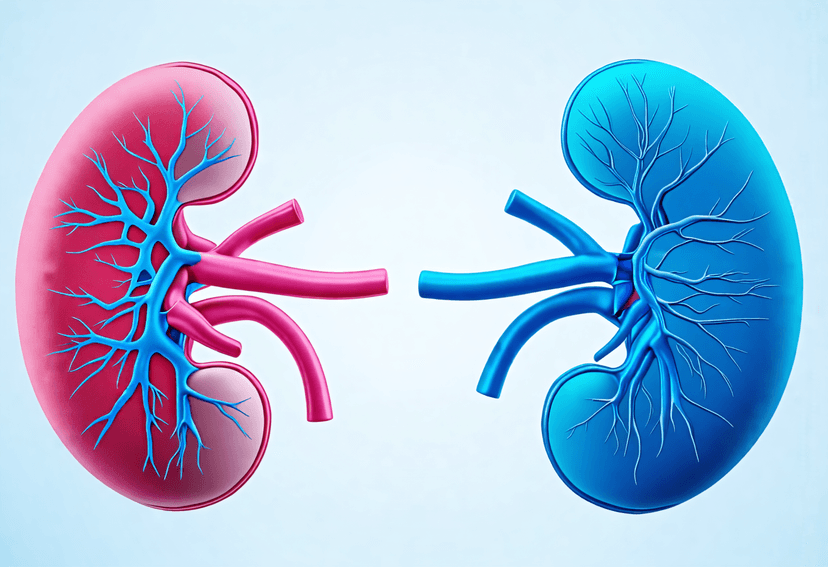
What is a Heart Transplant Waitlist?
13 Oct, 2024
 Healthtrip
HealthtripA heart transplant waitlist is a critical step in the journey of individuals suffering from end-stage heart failure, where their heart is no longer able to pump enough blood to meet their body's needs. It's a lifeline that offers hope for a new lease on life, but it's also a complex and often daunting process that can be filled with uncertainty and anxiety. In this blog, we'll delve into the intricacies of the heart transplant waitlist, exploring what it entails, how it works, and what patients can expect during this challenging time.
What is a Heart Transplant Waitlist?
A heart transplant waitlist is a list of patients who are waiting for a heart transplant, which is a surgical procedure where a diseased or damaged heart is replaced with a healthy one from a donor. The waitlist is maintained by the United Network for Organ Sharing (UNOS), a non-profit organization that manages the organ transplant waiting list in the United States. The list is prioritized based on the urgency of each patient's need, with those who are critically ill and in need of a transplant immediately receiving higher priority.
Most popular procedures in India
How Does the Waitlist Work?
When a patient is deemed in need of a heart transplant, they are evaluated by a transplant team, which includes cardiologists, surgeons, and other medical professionals. The team assesses the patient's overall health, medical history, and current condition to determine their suitability for a transplant. If the patient is deemed a suitable candidate, they are added to the waitlist. The waitlist is dynamic, meaning that patients can move up or down the list based on changes in their condition or the availability of organs.
The waitlist is categorized into three status levels, which indicate the urgency of the patient's need for a transplant. Status 1 is the highest priority, reserved for patients who are critically ill and in need of a transplant within hours or days. Status 2 is for patients who require a transplant within weeks or months, while Status 3 is for those who can wait several months or even years for a transplant.
Wellness Treatments
Give yourself the time to relax
Lowest Prices Guaranteed!

Lowest Prices Guaranteed!
The Waitlist Process: What to Expect
For patients on the waitlist, the wait can be an emotional and challenging experience. The uncertainty of when a matching heart will become available can be overwhelming, and the physical and emotional toll of waiting can be significant. Patients may experience feelings of anxiety, depression, and frustration, which can be exacerbated by the physical symptoms of heart failure, such as fatigue, shortness of breath, and swelling.
Preparing for the Wait
To cope with the wait, patients and their families can take steps to prepare themselves physically, emotionally, and logistically. This includes maintaining a healthy lifestyle, including a balanced diet, regular exercise, and stress-reducing activities. Patients should also stay connected with their healthcare team, asking questions and seeking support when needed. Additionally, patients can prepare their homes and families for the transplant, making arrangements for post-transplant care and rehabilitation.
It's also essential for patients to stay informed about their condition and the transplant process, asking questions and seeking support from their healthcare team. Patients can also connect with other patients who have undergone a heart transplant, sharing their experiences and offering support and encouragement.
Life After the Transplant
While the waitlist can be a daunting experience, the outcome of a successful heart transplant can be life-changing. Patients who receive a transplant can expect to lead active and fulfilling lives, free from the symptoms of heart failure. However, the journey doesn't end there. Patients must commit to a lifelong regimen of medications and follow-up care to ensure the success of their transplant.
Post-transplant care involves regular check-ups with the healthcare team, taking medications to prevent rejection, and adopting a healthy lifestyle. Patients must also be aware of potential complications, such as infection and rejection, and seek medical attention immediately if they experience any symptoms.
In conclusion, a heart transplant waitlist is a critical step in the journey of individuals suffering from end-stage heart failure. While the wait can be challenging, patients can take steps to prepare themselves physically, emotionally, and logistically. By staying informed, seeking support, and maintaining a positive attitude, patients can navigate the waitlist with hope and confidence, knowing that a new lease on life is within reach.
Related Blogs

Best Heart Bypass Surgery Packages on Healthtrip 2025
Explore top heart bypass surgery packages on Healthtrip for 2025.

Your Ultimate Guide to Affordable Heart Transplant in India: Top Hospitals and Doctors
Get the best heart transplant in India with expert doctors

Experience World-Class Cardiac Care at Fortis Escorts
Get the best cardiac treatment at Fortis Escorts Heart Institute

The Importance of Kidney Transplant
Discover the significance of kidney transplant and its benefits

The Future of Heart Transplantation
Advancements and innovations in heart transplantation.

Heart Transplant and Lifestyle Changes
Making healthy lifestyle choices after a heart transplant.










